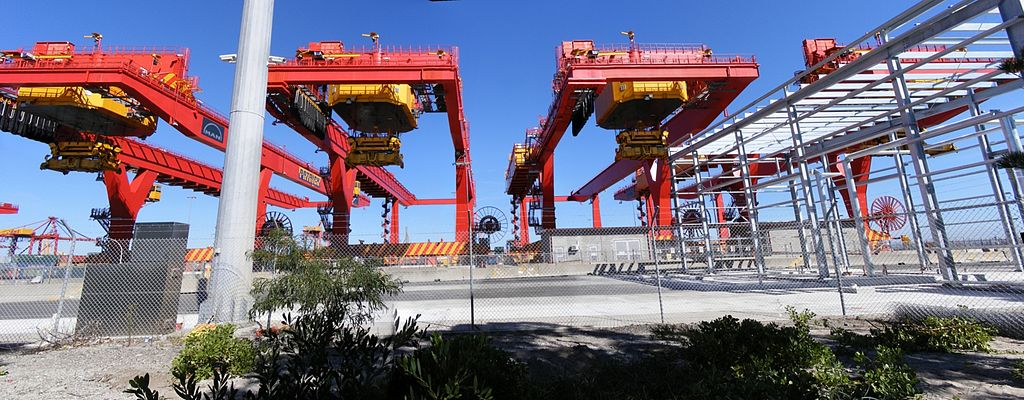Why is the automation of container terminals important? Everything you need to know!
The logistics sector plays a crucial role in the ever-expanding spheres of regional and international commerce. Thus, having a port to call at that delivers a wide portfolio of services with a greater focus on container terminal automation is beginning to generate more discussion and interest with every passing day, month and year. In this article, the importance and contribution of automated container terminals are addressed at length.

Port bot | img by Adam.J.W.C. via wikipedia commons (CC BY - SA 3.0)
What the container terminal automation entails
Having a process to work with within a demanding sector such as the logistics sector is a given based on the complex nature of its operations. Simply put, automation covers the implementation of electronic, electric, mechanic, pneumatic, hydraulic and computerised components to better manage and control equipment and a process. Added to this, automation extends to investing in a systematic mechanism that can be clearly identified and programmed to suit the needs of the hour. Thus, the main tasks include gathering of data, managing the same and controlling operations. Moreover, container terminal automation can be divided into two categories. Namely, fully automated and semi-automated. With reference to the former, a fully-automated container terminal is said to exist when the stacking yard and horizontal transfers connecting the yard and quay are automated. With respect to the latter, where automation commences at the stacking yard but does not reach the quay, it is said to be a terminal which employs a semi-automated process.
Determining factors of container terminal automation
Several reasons are shaping how the shipping industry functions which in turn, is calling for widespread and far-reaching changes to be made in how container terminals operate. Following closely on the heels of this thought, the need for container terminal automation is depicted as stemming from environmental, economic and financial pressures exerted by stakeholders of the shipping industry. For instance, mega ships are forcing ports across the globe to reshape their mechanisms and expand infrastructure in a way that would make them more attractive to work with. Through automation, terminals are well equipped to reduce port storage costs, cut demurrage charges and essentially, stay well clear of having to deal with congested ports. Though the initial investment is relatively high, experts are of the view that an automated terminal will bring with it bigger cost reductions in the long run. Further, automation demands a higher level of efficiency as opposed to relying on manual labour which may not necessarily minimise risks or limit costs. An automated container terminal will make do with a mechanism that encompasses one individual working out of a control tower that can result in faster and more predictable outcomes for an organisation. Also, a lesser reliance on human labour increases personal safety with reduced risks a glaring reality. However, introducing an automated process does not mean that one ought to completely eradicate one’s manual labour. This is why a growing number of ports are beginning to train their employees using cutting-edge technology so that they are well prepared to discharge their duties in a more digitised setting. Take, for example, the efforts of South Asia Gateway Terminals which are following a similar path en route to achieving their sustainable development goals in Sri Lanka. In the greater scheme of things, alleviating or reducing the carbon footprint in the shipping industry is one of the reasons in chief as to why terminals are shifting focus towards automated services. In this sense, optimised route planning is one of the contributing disciplines that facilitators are starting to buy into.
What does the future hold?
In short, opportunities to further maximise and fine-tune operations across a wider spectrum of terminals. Though, compatibility shortcomings and resistance to evolution are hampering these efforts. While automated container terminals can be expensive to maintain, a certain degree of scepticism hovers over nations that struggle to compete in the international market owing to capital constraints. It is a given that the superpowers of the world stand to benefit handsomely from a sounder allocation of resources including having the capacity and skillset to introduce technology into their businesses. As a result, developing counties will find it harder to keep up but as a whole, the future is indeed bright and clear for every stakeholder wishing to partake in automating container terminal operations, regardless of geography or economic status.
